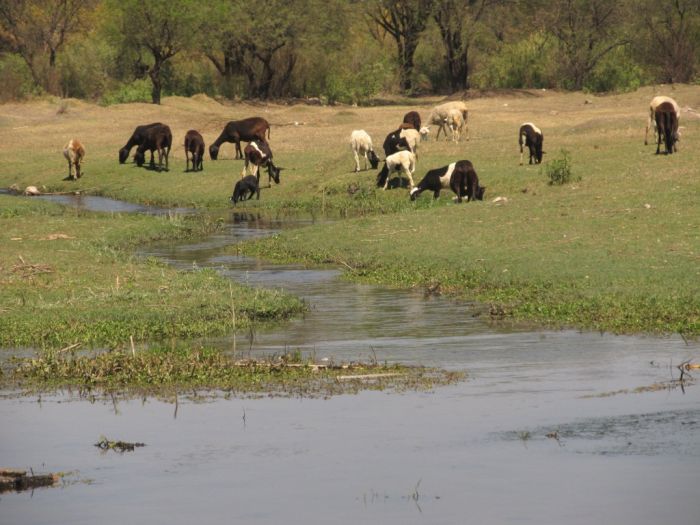Survey of the population of some Allotoca species in February
Submitted by michael.koeck on 28. April 2017 - 16:51
In February 2017 I was traveling with Erwin Radax from the 1. Wiener Neustädter Aquarium and Terrarium Association and a friend from England in the Mexican states of Guanajuato and Michoacán, partly to control the populations of some Allotoca species, but mainly to find an existing genetically isolated line of Allotoca dugesii north of the Río Lerma that is not part of the project. However, due to the lack of export papers, importing the fish was out of the question in advance. During the trip we visited the city of Uruapán, where there are the springs of the Río Santa Barabara, the main distribution area of Allotoca catarinae for the first time. There we actually found impressively beautiful representatives in the Presa Caltzontzín. On the way back, Allotoca diazi and A. dugesii were our destination, the springs of a former mill near Chapultepec to the east of Lake Pátzcuaro. These two species were also found in large populations in healthy waters. The day before we had visited the Lago de Zacapu, where we did not find the endemic species Allotoca zacapuensis, but this is due to the fact that even in the rather large body of water it lives only in a few places near the source. However, a second site of this type that became known a few years ago seems to actually no longer accommodate any animals. It is the discharge from a not very productive spring in a small town. Trapping attempts only resulted in exposed swordtails (Xiphophorus hellerii).
Our main project to find Allotoca dugesii in the Río Guanajuato in the area of the city of Irapuato, however, did not come to a happy end. The waters in Guanajuato - especially in the large cities - are highly polluted. We scoured some of the most promising areas, but with no results. However, we have not yet written off this population. A more detailed research and more precise analysis of the water situation around Irapuato after our return gave us new indications of possible sites, and another trip at the end of the year should provide information on this. By then, catch and export documents should also be issued, so that in this case it would even be possible export the animals. Until then, keep your fingers crossed!

Category:
